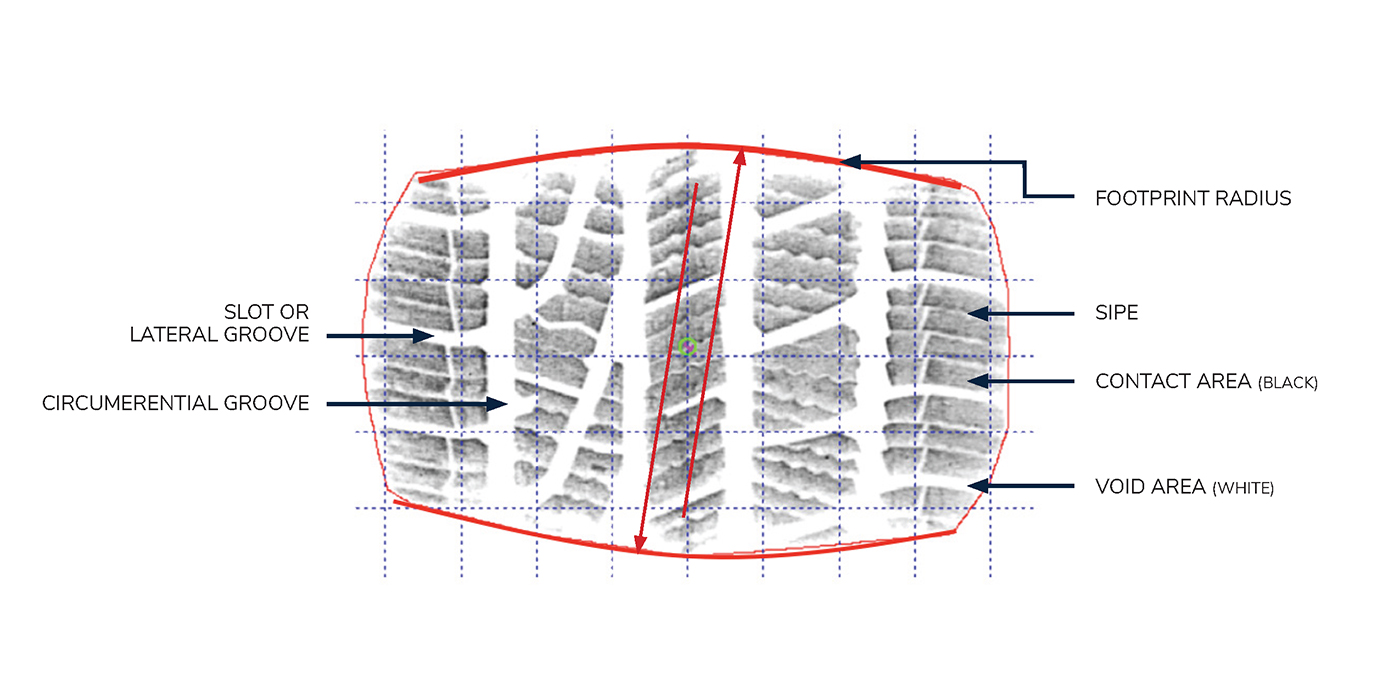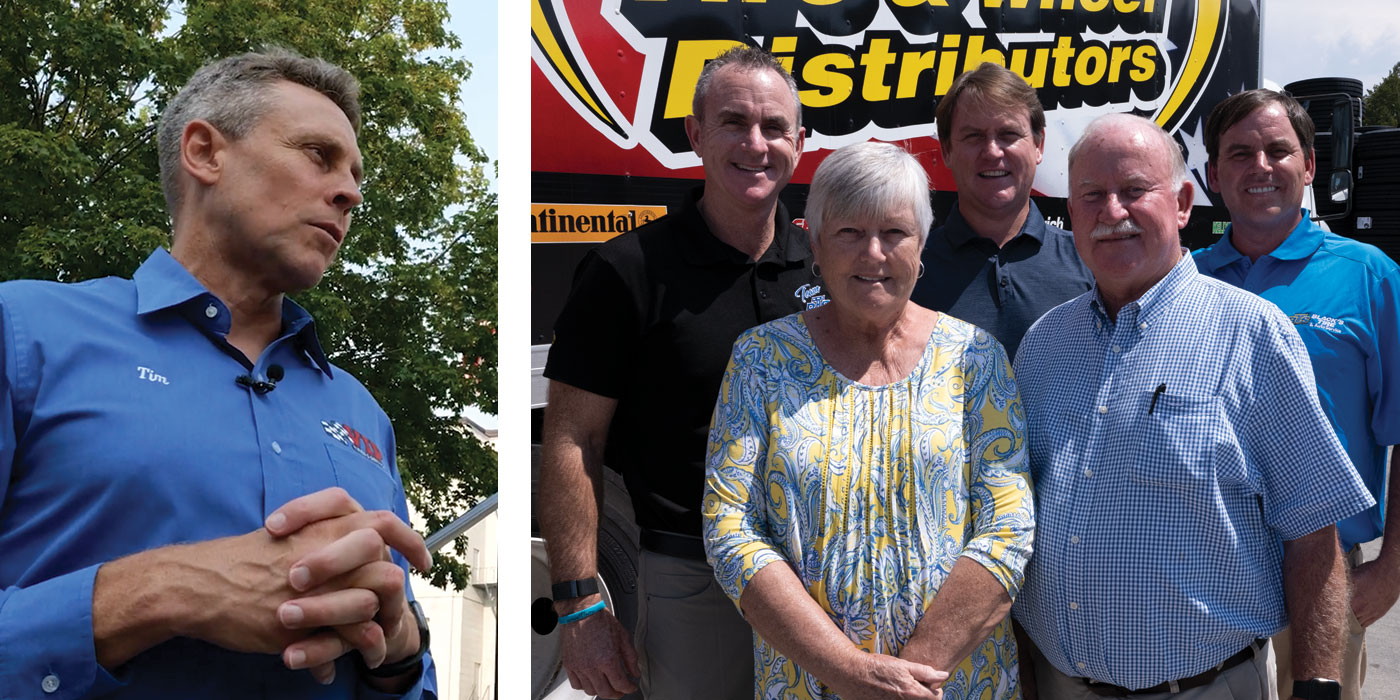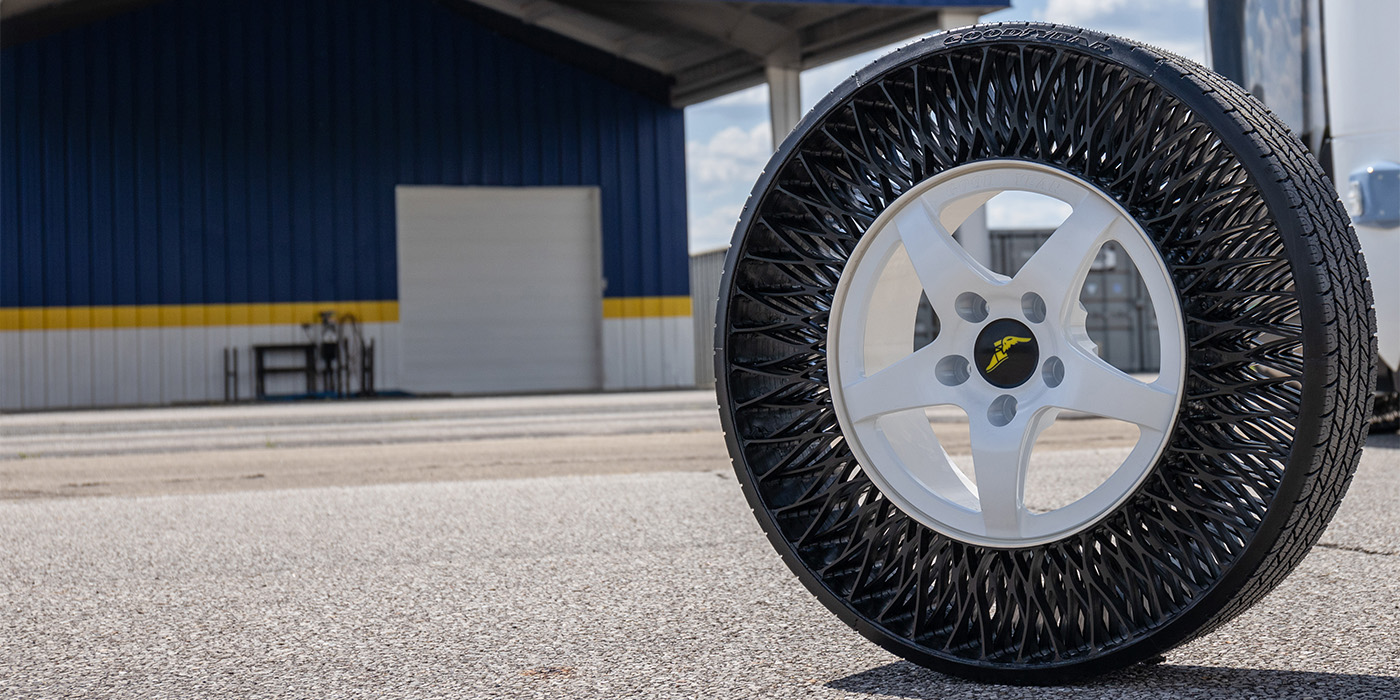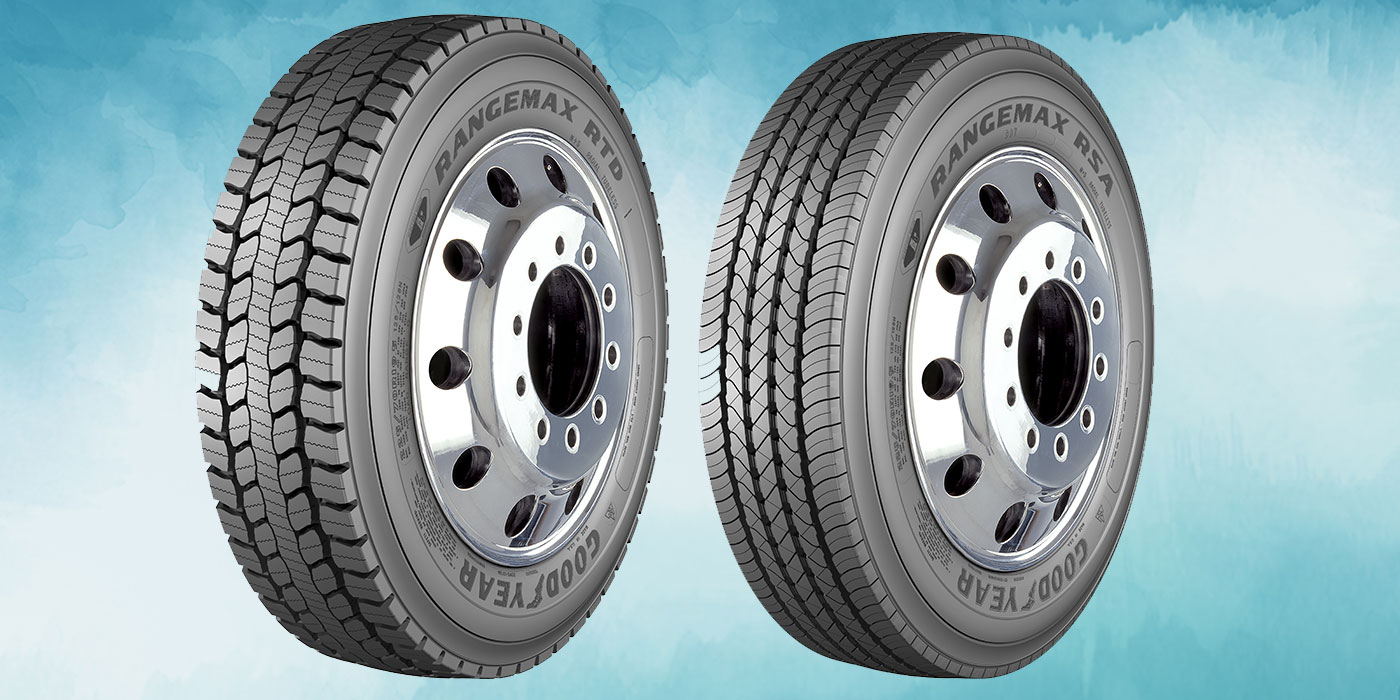Last January at its annual dealer conference, Goodyear unveiled plans to launch direct-to-consumer online sales across the U.S. through its Goodyear.com website. The announcement was met with a good bit concern by dealers, some of which quite vocally denounced the move as another slap to the face of independent distribution.
At the time of the announcement, Goodyear claimed that it had 1,100 locations – including some 600 company-owned retail stores – signed on. As of Nov. 13, that number has swelled to 4,000 retail locations (including company-owned stores), but Goodyear would not say how many individual dealers were involved. We were told that there were a number of large 30-plus store dealers involved, but no mass merchants or chain stores.
After months of a market-by-market roll out, the program was completely live from coast-to-coast as of October. Last week, we met with Mike Dauberman, senior director of marketing and interactive, and Bill Friel, general manager of consumer dealer retail, for an update on the program and where it is headed.
Dauberman: The main reason for doing this was all about the consumer, right? What we were learning was that consumer expectations were changing. We felt that those expectations were lagging some other categories – like books, computers, phones – but that the consumer was starting to expect that they could actually buy those tires online. We deemed that consumer, in our learnings and talking to them, as a consumer that was very focused on convenience. These are not every consumer out there that’s buying tires; these are ones who found the current tire-buying process is inconvenient for the way that they’re running their lives, and they wanted to be able to buy tires on their own at any time they wanted. They wanted to have a higher level of control. But this is not everyone who is a convenient shopper today, but that consumer base is growing.
More and more consumers are reporting that they’re using the Internet to research, using the Internet to buy tires before going to the store or instead of going into the store. So we think it’s fair to now assume that the vast majority of people who are walking into a store had been to the Internet. They’ve already shopped, they’ve already started to look at products. And their expectation when they walk into that store probably is very different from 2007 or 2008 when the very first conversation they’re having about tires is with that person behind the counter. Now they’re doing a lot of that work themselves. Not all the 83% that claim to be researching tires online are buying online, and we don’t think that 83% will all ever be buying online, but the key is that consumer expects to do research online.
We really focused on getting it right, but we knew that there were a lot of unknowns in how you go to market with a tire-buying process, because there was no such thing as an online tire-buying process for a manufacturer. We did a lot of market research, and we did all lot of testing. We really spent a lot of time trying to figure out what was right and what was wrong. We say it was five years in the making. It didn’t take us five years to build out the functionality, but we did start creating the building blocks of what it would take to have commerce five years later. So, for example, we have 20 million people coming to our website. If you’re going to sell tires online or if you’re going to influence consumers online, you need those consumers to physically be on your website. Otherwise, there’s no one to sell to. So very early on, we started to build up that user base so that five years later, when we’re physically selling, there’s somebody there to sell to.
Also, we really took the time to learn how we could have this be a cooperative process with our customers. We really worked hard, and we were very careful, and we pride ourselves for how we engineered the solution with dealers in mind. From day one, when we announced the program, we announced it with the dealers’ role. We made sure that the dealers had a role. We made sure they were highly compensated in the practice. We were very diligent and careful in that way, and we feel like we’re a leader in this space and that our solutions are the ones that are catering to the dealers that sell our products.
Tire Review: Mike, did you decide five years ago that Goodyear was going to sell online, or did you decide five years ago that you were going to follow that path, but that there were any number of potential exit ramps based on what you discovered?
Dauberman: It’s a great question. The way that I explain it is five years ago we felt that the Internet was becoming a very important influencer of consumers’ buying decisions. Five years ago we had conversations around would it ever make sense for a company like Goodyear to sell online. That was the extent of the conversation five years ago. As we put those building blocks in place – for example when we built that tire selector, we gave consumers the ability to find a tire and then go to a store – we learned from that. We started to hear from consumers what they liked and what they didn’t like. As we built up the traffic, we realized that more and more consumers were satisfied or dissatisfied with the process. It was all of those learnings over those years that eventually made us say we think this makes sense. That was, I would guess, three years into that process. So we weren’t thinking Goodyear would be selling tires online four years ago, five years ago. It evolved to it, based on all of these signs. The biggest signs for us were the consumer behaviors and what the consumers are telling us.
Tire Review: Talk a little bit about how the rollout worked.
Dauberman: When we putting this into a market, we focused on learning, making sure that we had the process right for getting the tire to the store, the consumer showing up, the tire getting put on the car, the dealer getting paid, the consumer being surveyed. We wanted to make sure that we had that all right. So, we started very small. And then we’ve systematically rolled it out to the additional markets in the U.S. We’re now national. So, now everywhere in the U.S. where there are installers, which is just about everywhere, a consumer can go online, and they can use Goodyear.com to buy tires. We didn’t just hit a big switch and turn it on. We added markets over time, and we made sure that everything was working in those markets.
Distance-wise, so we’re learning a lot. We’re learning how far consumers want to drive to get a tire installed. We’re learning how far they will drive versus how far they want to drive, and we still have some work to do. But overall, in most markets, especially the markets where Goodyear is strong, the consumers don’t have to drive very far – meaning not more than a few miles – to be able to go to one of our authorized installers to have the tires put on. The key is – we called it a ‘convenient consumer’, but real-time learnings, being online, has helped us to evolve this – convenience is king for what these consumers are looking for. Part of convenience is distance. So, it’s important that dealers are participating in these programs so that these consumers don’t have to drive 20 miles, because convenience consumers don’t do that.
Tire Review: Have you been able to determine among those consumers taking advantage of the program how many of them are already customers of that particular retailer?
Dauberman: Bill’s going to talk a little bit about that in a minute. What I’ll say, we made some promises or we made some assumptions at dealer conference, and we’ve beat those assumptions. So, this is turning out to be more friendly in that way than what we had said when we rolled this out.
[At this point, the Goodyear team led a walk through the website and sales and fulfillment process. There was nothing unusual about the transaction for the consumer or the installer. Goodyear claimed that it heavily tested language, phrasing and the position of click-through buttons, fundamentally reducing the process – from finding a tire to finding an installer to paying – down to about a dozen clicks. We move ahead in the conversation.]
Tire Review: With regard to shipping the ordered tires from the local distributor to the installer, how much time are you allowing between order and install?
Dauberman: It’s 48 hours. We’re testing though. So, 48 hours is extremely safe. It allows us to make sure the tire’s there, but we’re going to test that window. Over time, we’re going to figure out if 48 hours is right.
Tire Review: You’re not looking back into the dealer’s current inventory.
Dauberman: No, this is WD, this is wholesaler inventory. We look at the wholesaler that works with that installer. That wholesaler then drops that tire to the store the minute that the customer hits pay, all automated. It’s all built into the system, so when you place your order, the credit card goes through, that triggers that dealer’s warehouse to put the tire on a truck.
Tire Review: How much time between the order placement click to when that dealer’s informed that he has a 1 o’clock appointment on the 17th?
Dauberman: Instantly. So, immediately, when you, as a consumer, buy, you get a notification that says thank you for your order. It says that your order has been sent to the appropriate installer, and you’ll be notified when the installer confirms your appointment. At the exact same time, the installer is getting this email. There’s two buttons on the email. It says confirm the time or request the consumer to come in at a different time. Once they hit one of those two buttons, the thing’s done. So the consumer then automatically gets notified that their time is accepted, and that’s all the installer has to do before the consumer walks into the store.
Tire Review: What if the installer doesn’t read his email until 5 o’clock?
Dauberman: Actually, that’s a good question. We have a call center. If the order doesn’t get confirmed within three hours, the call center then reaches out to the dealer. We do notify the consumer that their orders are not confirmed 24 hours a day. It’s only during open business hours. But that’s our backend process to ensure that the consumer experience and dealer experience is clean. We thought this is a lot. A lot of people have to do all lot of things. It’s working really well; we do not have problems with consumers showing up at the store and the dealer not knowing they were coming. We have absolutely no problems with the tire not being there. As we get deeper into this, we may look at other ways to automate part of the process, but it’s working.
Friel: In fact, I think a lot of dealers, once they get the appointment, they will do everything to not reschedule. They don’t want to give the consumer an opportunity to spend any more time looking or change their mind or whatever. So, in terms of the reliability of the tires being there and the tires being installed right away, the dealers are very anxious to get them in.
Tire Review: Are the tire options that are displayed organized by price or by best tire for the vehicle?
Dauberman: We tested a lot of different ways. The winner so far is put them numbered by price. We’ve tested bestseller. We’ve tested different ways to see if it increased conversion, conversion meaning more people going through the process.
Tire Review: If you explain to the customer that this is the best tire for your vehicle, maybe direct OE, maybe the nearest cousin of direct OE, is that not better than price?
Dauberman: I agree with you. I guess the best thing I can say there is we agree with that, and I think those are the types of things we work on. So, trying to simplify and help the consumer make the decision without feeling like they have to be qualified tire experts.
Tire Review: What is the goal: to move rubber or help the consumer?
Dauberman: Help the consumer. The absolute goal here is to get the consumer the tire they want, to put them in the right tire, to have them be satisfied with the purchase. Your two examples, I smile because that’s the type of things we’ve talked about. Those are the conversations we’re having in trying to learn what are the things that work best.
Tire Review: So, how bad a decision can a consumer make with this system? I mean, is there a point where the dealer rolls his eyes at the tire selected?
Dauberman: It could happen. Our policy is no-questions-asked refunds, and we will take care of getting the tire back to the system. You, as a consumer, don’t have to do anything. That’s the policy.
Friel: And the call center is the answer. Most of the time it’s size. Customers do the research, but they still hit the wrong size in there. Instead of 18, it’s 19. They get to the store, but the call center has been available to them to make that change from 18 to 19. So it’s worked out pretty well.
In January when we had our conference, we had a wide range of response from the dealers in terms of the role that they were going to play. Some of the dealers that have participated on our tire service network, part of our program is we help them develop their own website, because a lot of them didn’t have any. So, those types of dealers, they were pretty much on board with the idea of continuing to get into the Internet and using websites. Some of the other dealers had some skepticism, without a doubt, as to where is this headed. So, what this shows is really the role that the dealer plays in the whole transaction with the consumer purchase and how to get the tire bolted onto the car.
As Mike had mentioned, it’s an automatic system that our wholesale distributor is informed the moment the customer purchased the tires online. And that particular tire gets shipped directly to the installer, and it’s identified as a set of four tires for a specific consumer. I think one of the concerns of the dealers was just the steps that we’re going to take to get this handled. They were concerned that they’re busy every day selling tires and working on cars, and it’s just going to be an administrative nightmare to them. Logistically, it was just going to be a problem. And the key is that the platform that we used to process the whole delivery to the dealer, let him get his credit, is our national account and government sales platform.
So we didn’t have to reinvent anything. We had a platform that they were very familiar with. Most of them are already in the national account business or the government sales business, so that’s really the basis of how the dealer eventually gets his credit from Goodyear to have the tires installed. And it comes in the form of a commission and an installation service credit. There are several tiers, based on the SKU of the tire, in terms of how much credit they get, based on their size and type of vehicle and tire and so on there.
Tire Review: So the dealer does not get a check. The dealer gets no cash.
Friel: That’s correct. It comes through on a credit form.
Tire Review: What’s been the feedback from the dealer body about not getting cash?
Friel: I think because it’s so similar to our national account programs that they’re familiar with, it was more or less a very similar transaction to them. It was we weren’t doing anything differently than we had before, they were familiar with it.
Tire Review: Are they getting credit for the sale on their volume requirements?
Friel: Yeah.
Tire Review: Are they covered on their volume bonuses?
Friel: Yes. It ties right into our growth and our marketing programs.
Tire Review: What national accounts do you have on consumer?
Friel: Our biggest one, you know, are Element, ARI. They’re probably the biggest consumer national accounts we have out there right now.
When we first kicked this off and a dealer goes on the installer program, there is some training that has to be done right away for their salespeople upfront as well as the people in the back. We start off with a training resource guide that is very comprehensive. That gets shipped to all the dealers that participate on the installer program. It includes an online training course. And then our field team that’s out there obviously sits down with the dealer and their salespeople. It’s like a lot of things; once the dealer has the first or second transaction, then it’s pretty much rote from there.
The call center has been a big resource for us. If there’s any questions at all, either from the consumer standpoint or from the dealer standpoint, the call center is there 24/7, and we’ve been able to address, like I say, any changes in size or things of that nature, but it hasn’t come up too often. And then as the transaction is all completed, and now the dealer does not have to worry about any kind of pricing, other than the fact if they sell services over and above the tire purchase that generates an invoice on the part of the dealer.
Read Part II for more on Goodyear’s direct online sales effort.













